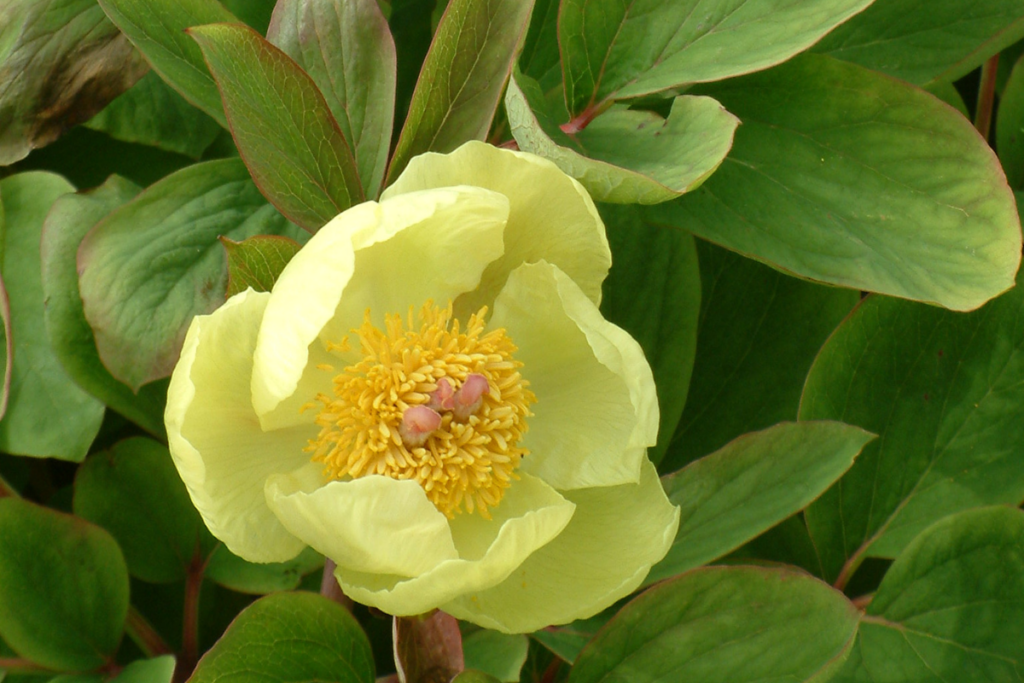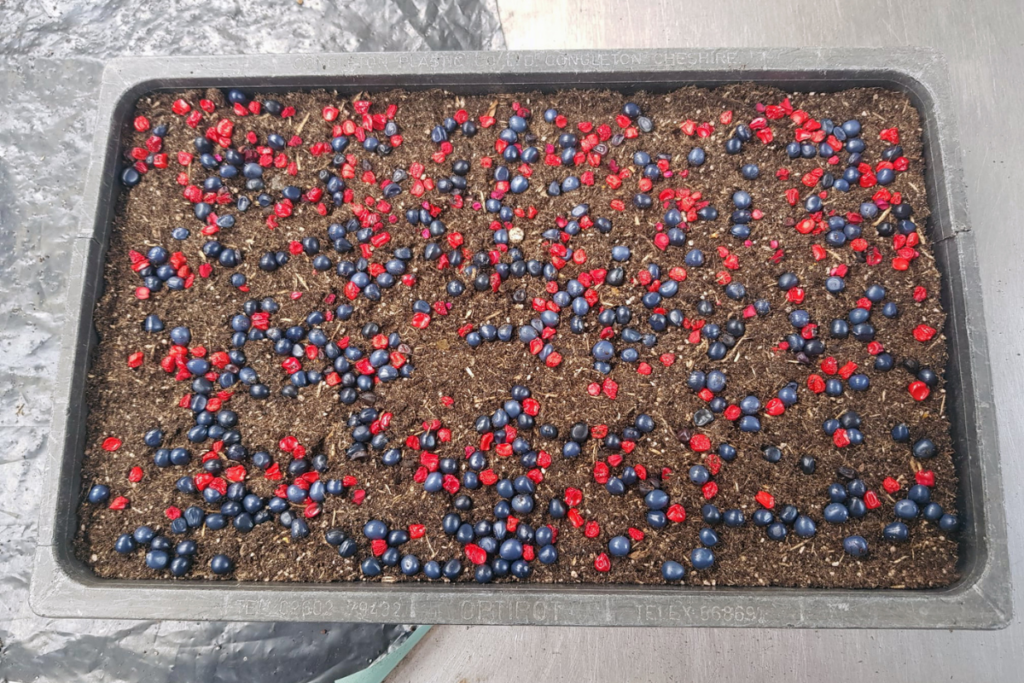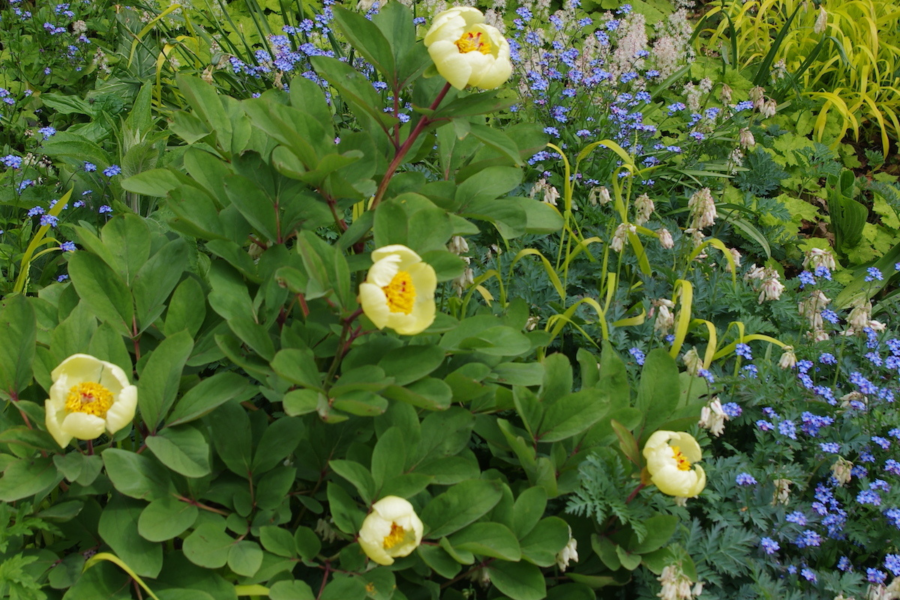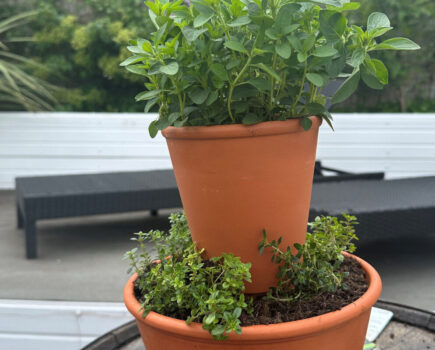Beloved by Beth Chatto, her team explains how to grow them
With so much looking fantastic in the garden at the moment, it’s hard to know what to share. That said, the beautiful peony, a plant which draws much attention from our visitors and a favourite of Beth Chatto’s, just had to be written about! Here, the team explains how best to grow and propagate these garden gems.
Julia x
Herbaceous peonies, with glorious romantic blooms heralding the start of summer, have featured in Beth’s garden for many years and are partnered with other late spring/early summer favourites such as dicentra and forget-me-nots. As with most plants in the garden, Beth preferred species peonies or cultivars offering single flowers – those without additional petals which are more accessible to pollinators.
Although they can be grown in sun, peony flowers will always look their best and last longer in cool places, between shrubs or beneath light overhead shade. For strong, healthy plants, grow in a humus-rich, free-draining soil. All peonies take time to settle down and make a substantial rootstock, but be assured that with each successive year you can expect to count more flowering stems.

Paeonia daurica subsp. mlokosewitschii, or the more pronounceable ‘Molly the witch’, was one of Beth’s favourites, and she often used the foliage and flowers for flower arrangements. The common name, Caucasian peony, suggests it is indigenous to the Caucasus mountains. The reddish pigment on the new shoots contain sugars and amino acids which work as an anti-freeze ensuring the plant’s protection early in the year.

Bursting through the soil in March, the emerging red buds unfold with bronzed foliage, gradually turning a soft grey-green as the plant matures. In May, lemon-yellow, cup-shaped flowers appear with broad, oval petals and golden stamens.
Another unusual peony, given to Beth by friend Cedric Morris, was originally thought to be P. emodi but later renamed as P. ‘Late Windflower’. It is a cross between P. emodi and P. veitchii and the foliage is finely cut and the exquisite flowers are white and sweetly-scented.
Propagation

The ripe, black seeds are collected in late summer and sown fresh. After germination the very best seedlings are chosen and pricked out, and some are grown for a further five years to ensure the selected seedlings are true to the parent plant.
To divide existing plants, they are lifted and divided while dormant between November and early March. Always ensure each section contains enough roots and at least three eyes (buds). Replant in a good-sized hole, but not too deep, ensuring the eyes are no more than a couple of inches below the surface.

Another form of propagation is undertaken via root cuttings. During the division process, roots that are too long to fit in pots are trimmed. The resulting cuttings can then be laid down horizontally in rows in a large shallow tray of compost before covering with gravel. The root cuttings will then sit in our propagation tunnel until spring next year when we can expect new shoots to appear.
“I could see the large red buds of Paeonia mlokosewitschii just breaking the surface of the soil. I shall enjoy the unfolding, mahogany-tinted young foliage long before the flowers appear in May. Without being aware of it, I was drawn out of my futile fretting by these early treasures.”
Beth Chatto
“The extravagant flowers of peonies are almost all well-provided with nectar and pollen. Bees, wasps and hoverflies are attracted to the resources of the flowers, with often several individuals occupying each open flower.”
Chris Gibson, wildlife expert at Beth Chatto Gardens
You can find out more from the Beth Chatto team at www.bethchatto.co.uk/discover/our-blog/guides/
Find more tips, advice and articles like this at the Amateur Gardening website. Subscribe to Amateur Gardening magazine now.





